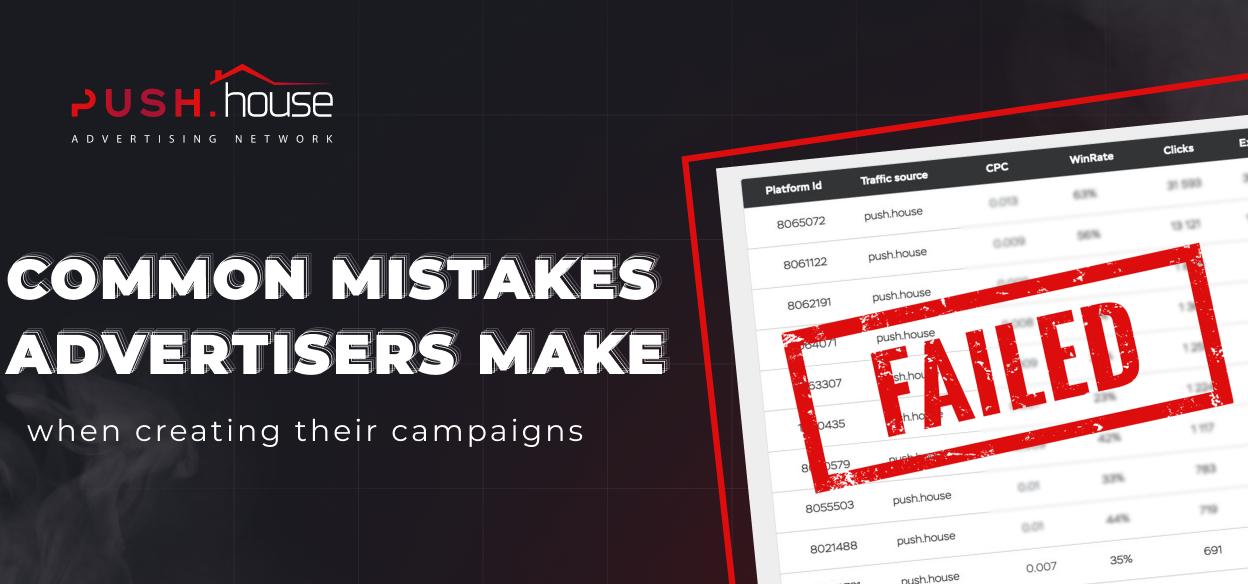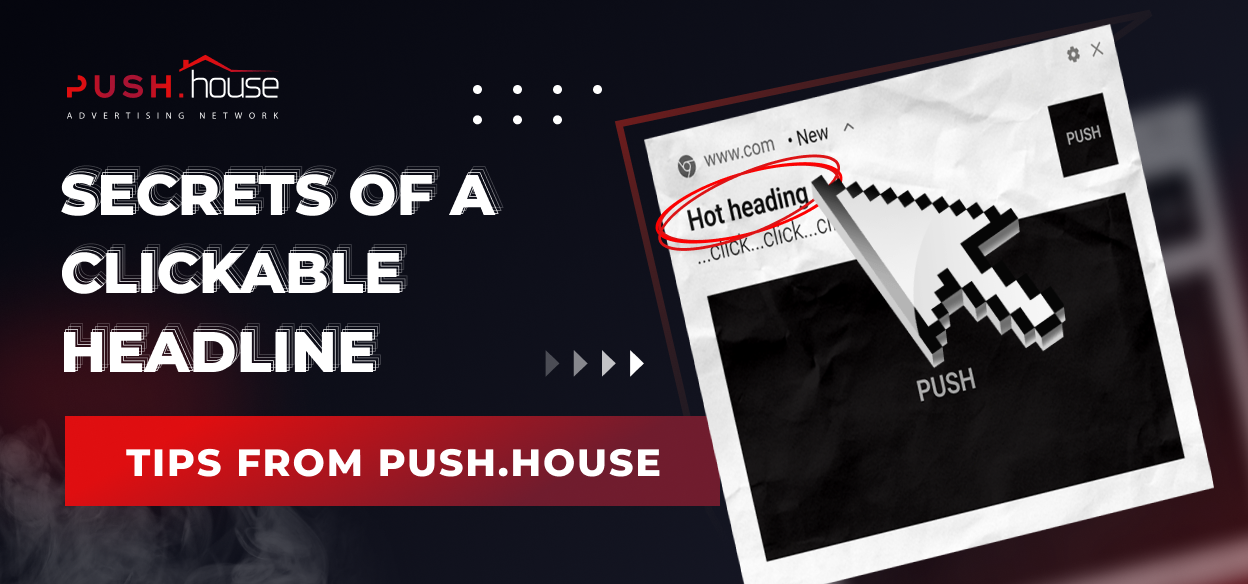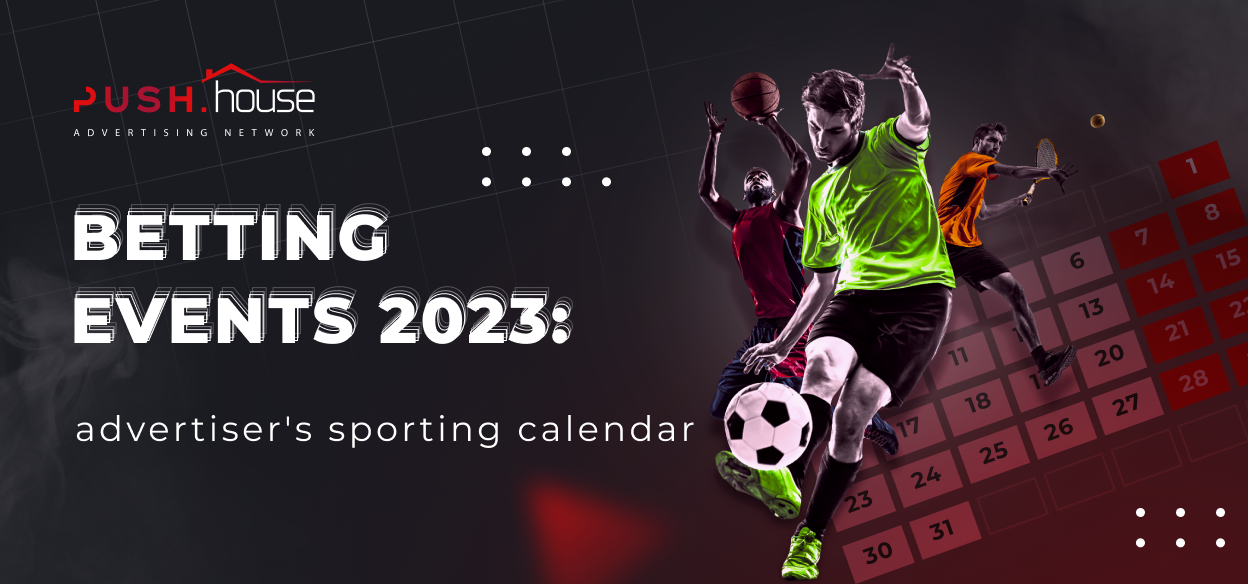
Common Mistakes Advertisers Make When Setting Up Advertising Campaigns
When you have the right strategy, using push notifications to promote offers in popular verticals can provide a stable income for advertisers over an extended period. Setting up advertising campaigns in Push.House does not require any technical skills or experience in running ads in complex ad networks. Anyone can manage our dashboard’s functionality.
Despite this, many of our partners make serious mistakes in setting up their ad campaigns, leading to significant losses in their advertising budgets. We’ve prepared a list of the most common errors in campaign setup that will help you avoid potential losses and contribute to maximizing profits when working with Push.House.
Common Mistakes:
Lack of Analysis
The effectiveness of promotion and the success of your advertising campaign heavily depend on the analytical skills of the advertiser. Analysis involves continuously collecting data for subsequent campaign optimization. The primary metrics and promotion indicators are available in your personal Push.House dashboard. For accurate data, it’s recommended to use a specialized tracker.
Very Broad Targeting
Certainly, it’s reasonable to start your first advertising campaign with broad targeting settings. In the initial stages, this allows you to assess how interesting the offer is to users in different regions and gather enough data for further campaign optimization.
However, after obtaining the necessary data, it’s best to segment your targeting by disabling ineffective devices, OS versions, browsers, languages, or subscription ages (days). Analyzing the effectiveness of the initial launch will provide enough data to accurately determine the elements of your setup that are inefficiently using your advertising budget. By using this data to optimize your targeting settings, you can not only save funds that can be used for advertising but also achieve the best conversion rates.
Error in Setting Ad Display Times
To reduce costs, advertisers often decide to exclude ad notifications during nighttime hours, without considering the fact that the target audience for some verticals (e.g., gambling and betting) is particularly active during the night.
When it comes to turning off ad notifications, it’s essential to base your decision not so much on regional characteristics but on the specifics of your offer. Products that involve a preliminary call from the call center before placing an order should only be promoted during the call center’s working hours.
We recommend refraining from automatically reducing the number of ad notifications during nighttime hours in the early stages of promotion. Especially without prior knowledge of the offer’s specifics and an analysis of the audience’s geographical characteristics. In the worst case, this can lead to missed conversions.
Contact the Push.House manager to get started
Ignoring A/B Testing
One should not expect an instant flow of conversions after the first campaign launch. Stable campaign performance is only achieved after the testing stage. Before an advertising campaign begins to yield a stable profit, advertisers must determine the optimal combination of creative elements and targeting settings by testing different variations.
The primary goal of testing is to gather data. Cutting corners on testing hypotheses may not be cost-effective. In the case of identifying an effective combination, all investments will pay off.
Promoting with “Burned Out” Creatives
Promoting with the same creatives in the long term won’t be beneficial; it will only deplete your advertising budget. When working with push ads, it’s essential to understand that any creative will become outdated over time and requires optimization. To maximize the benefits of your promotion, advertisers must regularly refine their advertising campaign’s creative based on user reactions and behaviors. Try to make changes to your setup regularly and constantly explore new effective ways to engage your target audience, especially when your performance indicators start to decline.
Unclear Call to Action
Unclear or vague calls to action can create confusion and deter the audience. Before making a decision to click, users dedicate only a few seconds to the notification. The advertiser’s primary task is to capture the user’s interest and encourage them to click on the notification within this short timeframe. To achieve this, it’s crucial not only to determine the specific action required from the user but also to reflect it in the headline, button labels, or notification text.
Remember that you have limited characters for creating the headline and text. Therefore, try to include only essential information related to the offer.
Lack of Consistency with the Landing Page
After users click on an ad notification, they are directed to the offer’s landing page, where they expect to see a continuation of the story presented in the creative. If you provide a specific discount amount or indicate the timeframe for benefiting from the product in the creative, ensure that this information is also present on the landing page. Differences between the notification and the landing page can lead to the loss of potential customers and the budget spent on attracting them.
Desktop Disregard
A common mistake advertisers make is underestimating the value of desktop clicks compared to mobile clicks. The effectiveness of notifications on desktops can significantly differ from the effectiveness of the same creatives on mobile devices. This is influenced not only by the vertical’s specificities or the chosen strategy but also by the unique behavior of users.
A well-prepared creative and headline can elicit a more significant response from users who receive notifications on desktops. The visual presentation options for desktop notifications are broader, allowing advertisers to use additional methods to influence the audience.
To maximize the benefits of your promotion, do not ignore desktop users, especially since desktop clicks in Push.House are 50% cheaper than mobile ones.
Excessive Text
Regardless of whether you are advertising on desktop or mobile, when creating a headline and text, aim to ensure that the text is legible even on a small screen. Do not use all the allowable characters in the headline and text. Typically, 45-55 characters are sufficient. This is the amount that fits on the screens of most Android smartphones and older iPhone models.
Incorrect CPC Bet
The lower your bid, the smaller the reach of your advertising campaign. The lower the rate you offer for displaying a notification, the fewer users will ultimately see it.
However, setting the bid too high cannot be considered an optimal strategy either. It is recommended to aim for the average market price and only slightly exceed it.
Conclusion
Today, push notifications are attracting increasing attention from advertisers. Many of our partners have personally experienced that achieving high conversion rates in Push.House is possible within the first week of running an advertising campaign. Be attentive, avoid mistakes, test new hypotheses, and strive for maximum profit.
Good luck!









